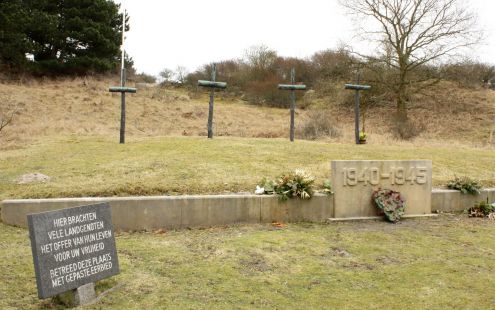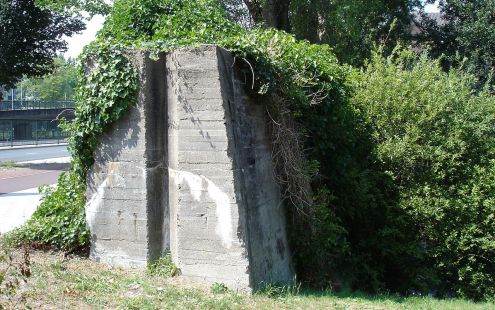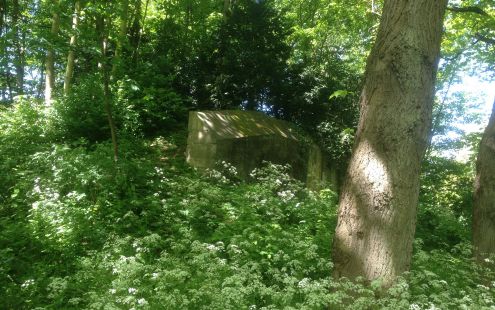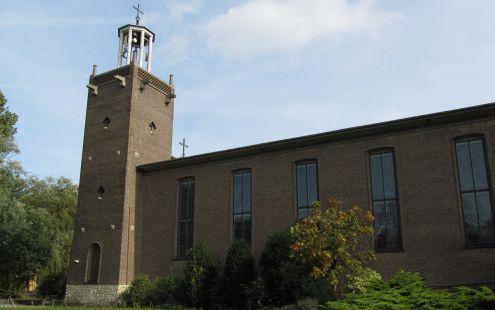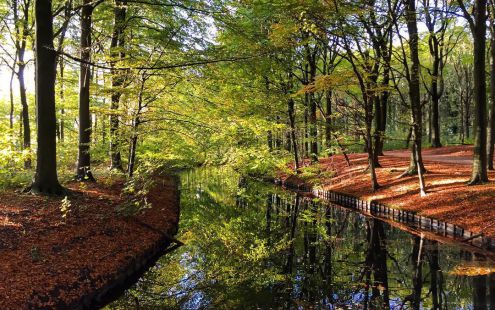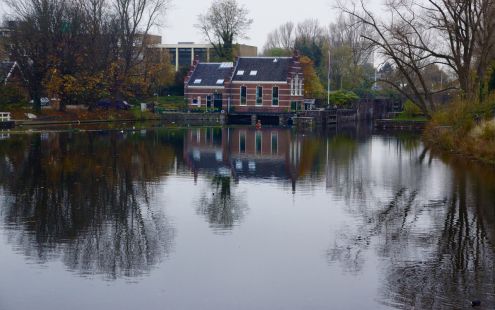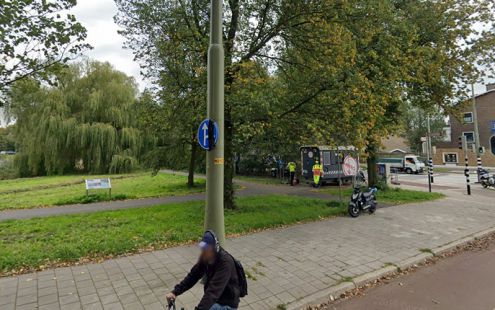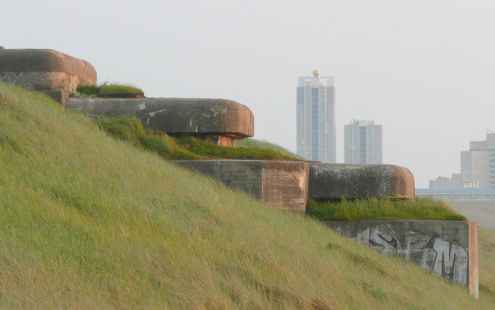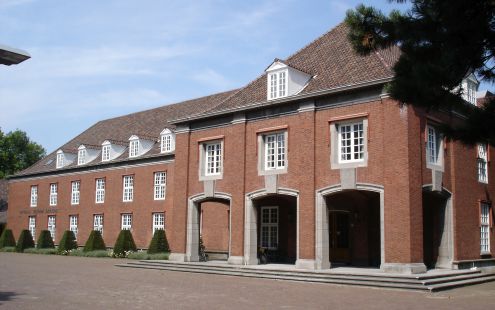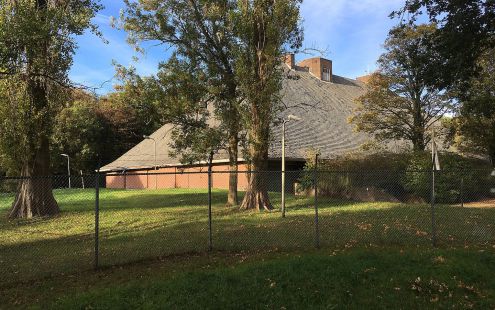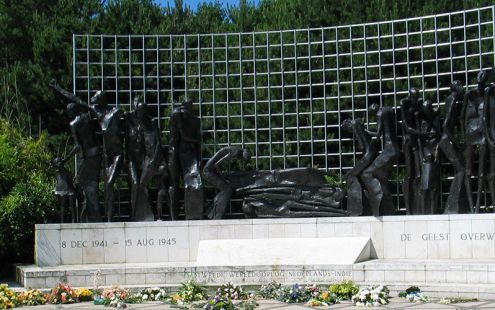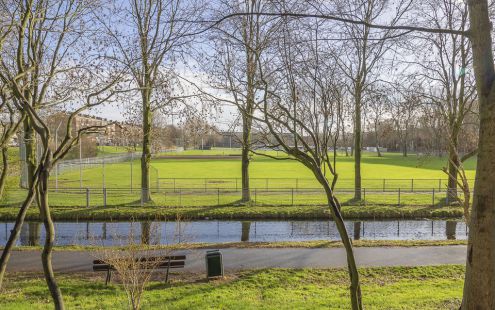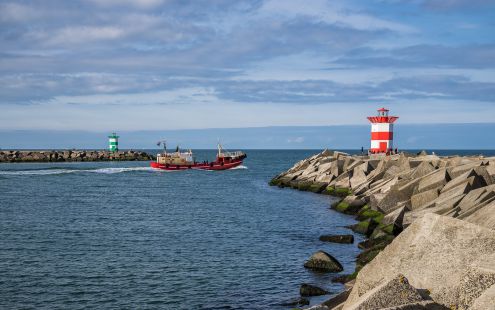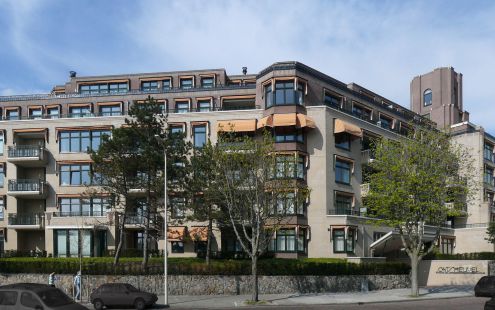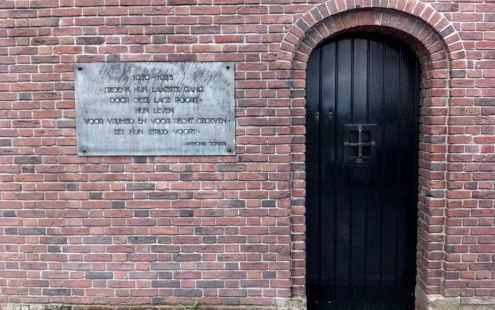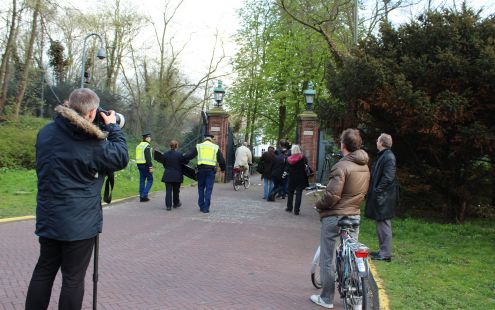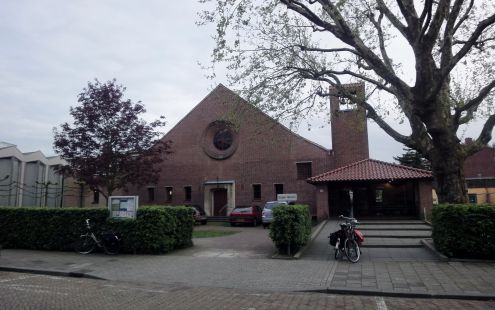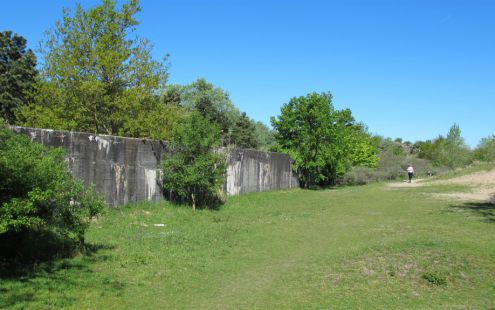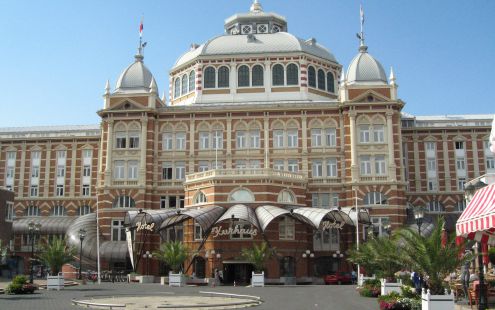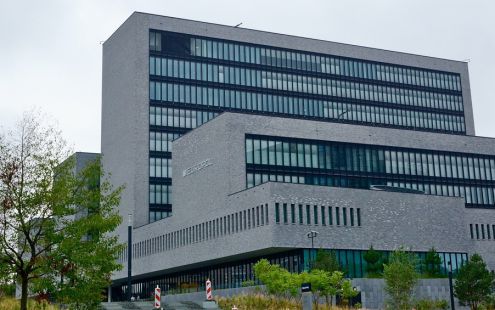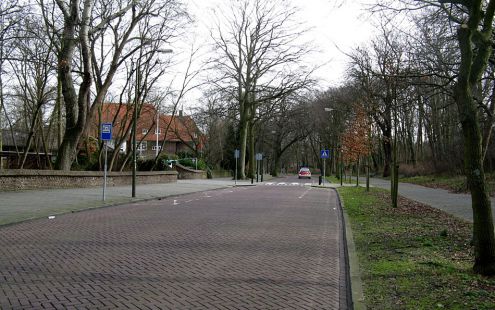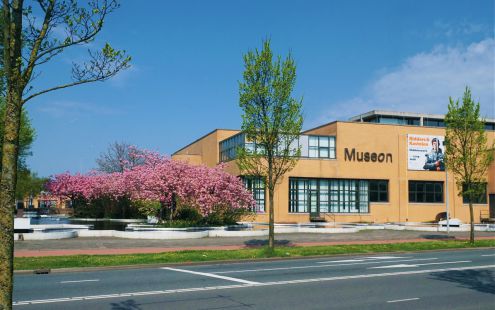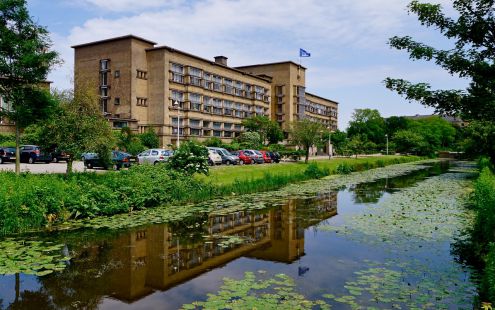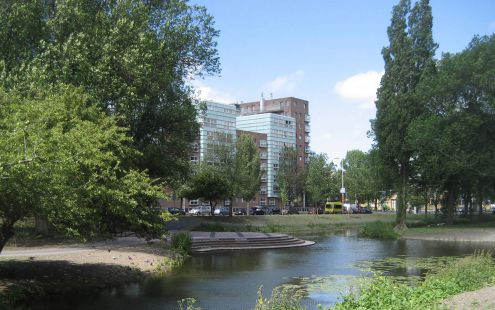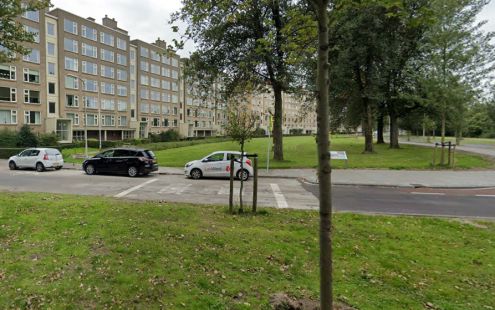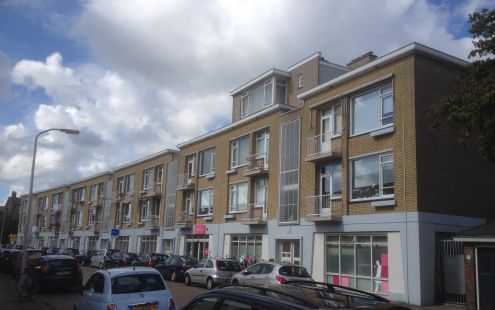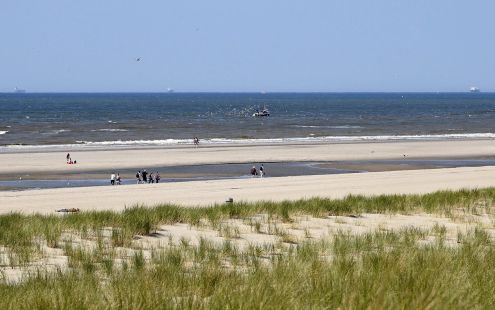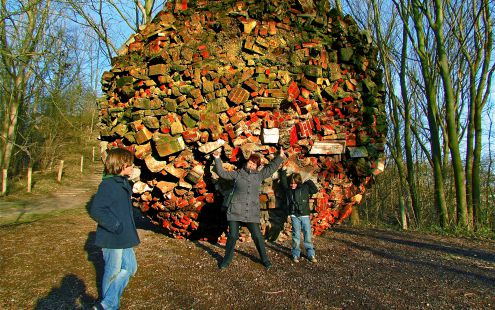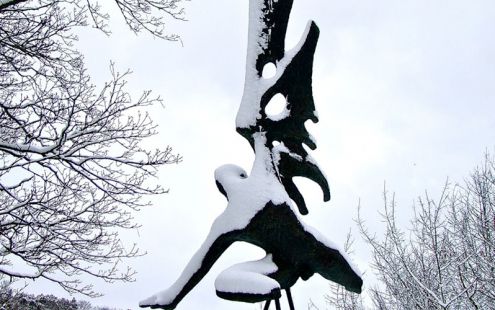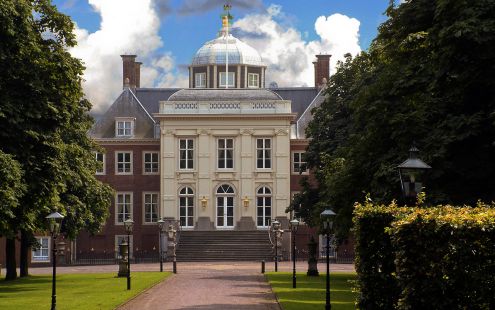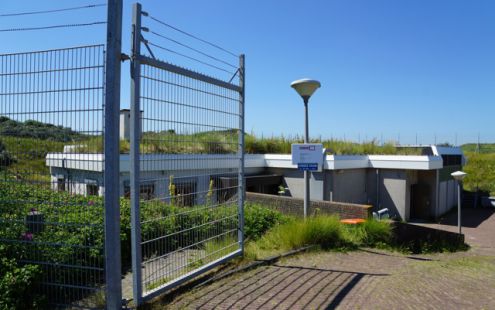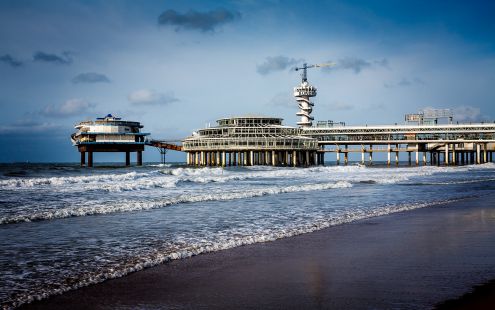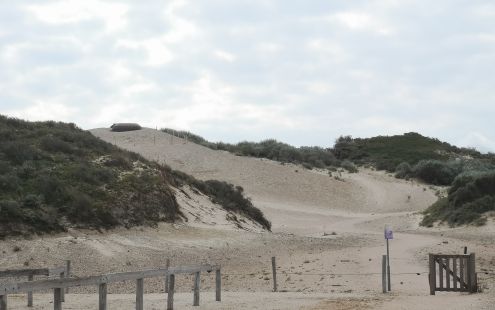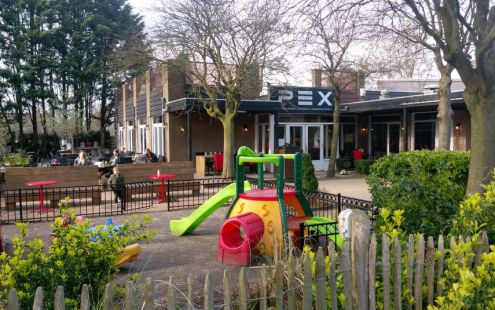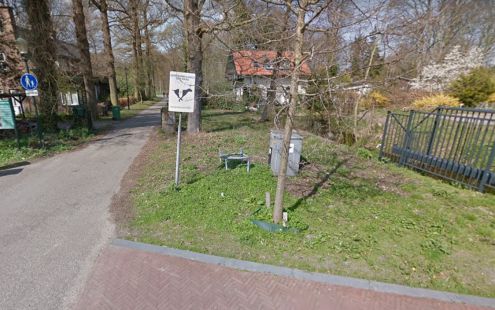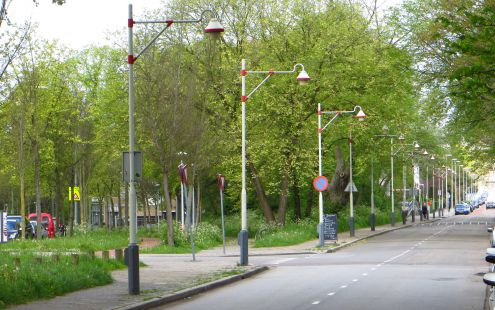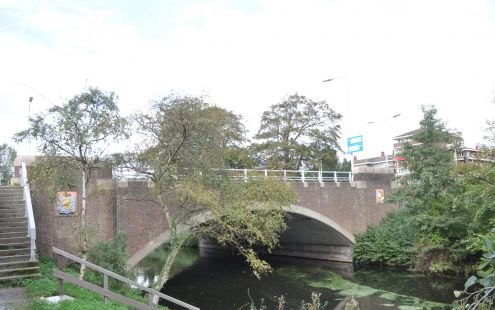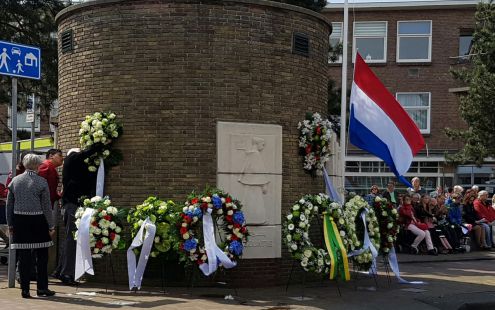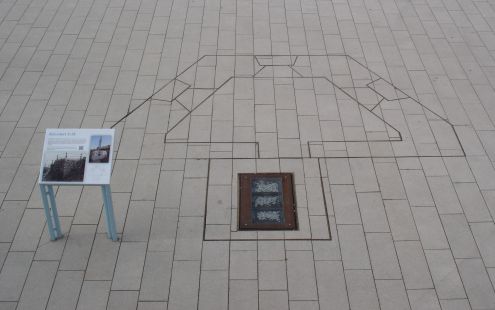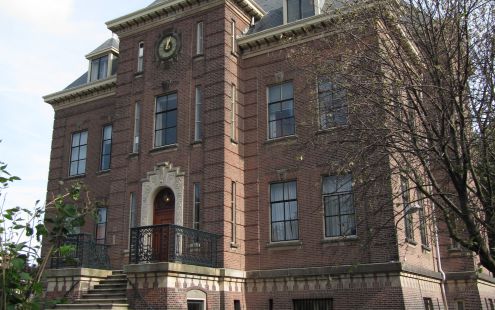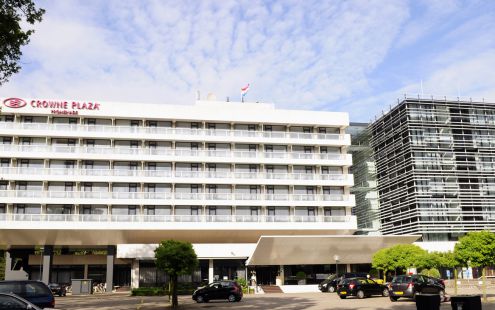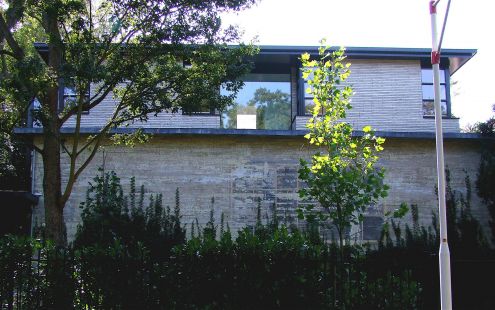Waalsdorpervlakte was used as a place of execution during the years of occupation. It is estimated that approximately 250 …
Read morePlaces
Overzicht van alle plekken, zowel de plekken die deel uitmaken van de fietsroute als van de wandelroute.
Here, you are looking at part of the wall intended to protect the bastion of Scheveningen against an Allied attack. The wall …
Read moreOp het terrein van de theeschenkerij Waterkant staat een kleine bunker. De bunker maakte deel uit van het bunkercomplex van …
Read moreThe bunker complex in this little park played a supporting role. It is still fully intact. The eight bunkers were largely …
Read moreThe original Kerk van de Heilige Martelaren van Gorcum (Martyrs of Gorkum Church) was designed by architect Nicolaas …
Read moreDuring World War II, a wide anti-tank ditch was constructed here as part of the Atlantic Wall. Before that, Lübeckstraat was …
Read moreDuring World War II, the occupying German forces constructed an anti-tank trench straight across the Haagse Bos woodlands …
Read moreThis street is part of the Duinoord neighbourhood, developed in the late 19 th century on the initiative of banker …
Read moreBy 1943 this area was a stretch of desolate wasteland. The housing in the immediate area had been demolished and the …
Read moreThese gardens are in an area where all the streets have flower names. Before the Second World War, there were similar …
Read moreIt is worth climbing this dune. De Hoge Nol, the highest dune in the area, is partly artificial: in the 1930’s, the …
Read moreCoastal batteries formed the backbone of the Atlantic Wall. Initially, these defences were primarily built at important …
Read moreThis building, which is being converted into a housing complex, was established as barracks for the Ordnungspolizei by the …
Read moreAustrian lawyer Arthur Seyss-Inquart was Reichskommissar of the German-occupied Netherlands from 1940 to 1945. He walked …
Read moreDuring World War II, Scheveningen and the Clingendael estate turned into a fortress, which needed to be able to withstand …
Read moreAs a result of World War II in Indonesia and its fall-out, over two million people with ties to the former Dutch East Indies …
Read moreBefore WW II this area was called Stokroosplein (Hollyhock Square). It was established between 1922 and 1926 as a peaceful …
Read moreScheveningen was largely deserted. Only citizens who were needed to keep the stronghold functioning, such as shopkeepers, …
Read moreThis spot is at the edge of the pre-war Zorgvliet villa area. The opening of architect H.P. Berlage’s new Gemeentemuseum in …
Read moreNot only criminals were in Scheveningen prison during World War II, people who had resisted the occupying German forces in …
Read moreThe Catshuis was also listed for demolition to make way for the Atlantic Wall. Fortunately, its owner (Adriaan Goekoop) …
Read moreThe present site of the Maranathakerk was inside the wartime no-go area. By the time The Hague was liberated, the houses …
Read moreThis seat is a monument to aristocratic alderman H.A.C. Ver Huell, but he never got the chance to use it to enjoy the view …
Read moreA 270-metre long anti-tank wall of unreinforced concrete protected the Scheveningen stronghold to the north-east. Of this, …
Read moreThis is the former site of Radio Scheveningen, the broadcaster that was responsible for communication with ships at sea in …
Read moreBefore World War II, Scheveningen was a vibrant seaside resort in summer, popular with wealthy Dutch families and German …
Read moreClose to the Gemeentemuseum, there was a sharp kink in the Atlantic Wall where it turned towards Eisenhowerlaan (then known …
Read moreIn the mid-17th century, Dutch poet and statesman Jacob Cats had a country house built for himself on land in the …
Read moreVilla Sandhaghe was built in 1907 at the highest point of Van Stolkpark. During the Second World War, this house and a …
Read moreKijkduin consisted of 150 buildings before the war. Half of those were demolished to make way for the construction of the …
Read moreBefore the German occupation authorities began building the Atlantic Wall, the Kunstmuseum stood at the junction of …
Read moreThe houses along Aronskelkweg were still partly under construction when World War II broke out. The school across the water, …
Read moreThe Second World War produced changes in the street plan of this part of the city. Before the war, the present President …
Read morePrior to the Second World War, this was a residential area, built in the early 20 th century to house members of the …
Read moreThis area is known as the Bomen- en Bloemenbuurt. At this point, it divides into two parts. On one side, you see a residenti…
Read moreThere were mines floating at sea to block Allied vessels. The beach was full of barricades, such as dragon’s teeth fortifica…
Read moreWhat you see here looks like natural dunes, but they were actually created by human hands. They are not made of sand, but of …
Read moreA bronze figure created by sculptor Titus Leeser stands to the south-west of the water feature in Van Stolkpark on the edge …
Read moreHuis ten Bosch suffered badly during World War II. Thanks to the efforts of the palace intendant, a plan by the occupying …
Read moreThe bunker in which the Netherlands Institute for Sound and Vision in Hilversum now houses part of its film collection was a …
Read moreUntil the end of 1942, this spot was in the middle of the area of large, upper-class houses known as Zorgvliet. It was a …
Read moreA visit to Wandelhoofd Koningin Wilhelmina, as Scheveningen’s first pier is named, was a popular outing. Initially, the war …
Read moreHere, you ride along the anti-tank ditch that was dug along the Clingendael estate, the seat of government of the occupied …
Read moreThe German Navy started constructing the Kijkduin Radar Complex in the dunes here from 1943.
Read moreThe beach clubs had to move when the occupying German forces commenced construction of the Atlantic Wall directly along the …
Read moreThere were three farms in this area prior to World War II. They were surrounded by sports fields, tennis courts, a tree …
Read moreOne of the entrances to the Clingendael stronghold was here. From a military standpoint, an access point is always a weak …
Read moreOn the orders of the occupying German forces, a bunker complex was built on either side of Badhuisweg: Widerstandsnest 318. …
Read moreThe White Bridge
Read moreThe memorial on Tesselseplein consists of three sections. The stone on the left bears the inscription: evacuation 1943-1944. …
Read moreNot all bunkers along the coast of Schevening were of German origin. On 28 August 1939, when tensions flared rapidly in …
Read moreThis spot is on the dividing line between the part of the Zorgvliet development that was demolished and a section that …
Read moreThe two or three-storey rectangular apartment blocks that stood here from the early 20th century were demolished during the …
Read moreThis used to be a very busy spot in fine weather, when walkers in the Scheveningen Woods mingled with hotel guests on the …
Read moreThere is a former munitions depot beneath the villa at 139a Badhuisweg, which dates from 2007. The name of the villa is La …
Read more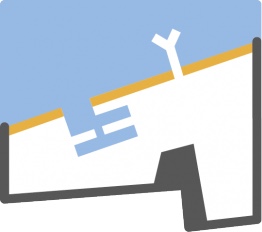 Herinneringsroute Atlantikwall Den Haag
Herinneringsroute Atlantikwall Den Haag
